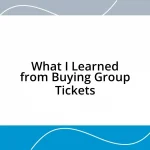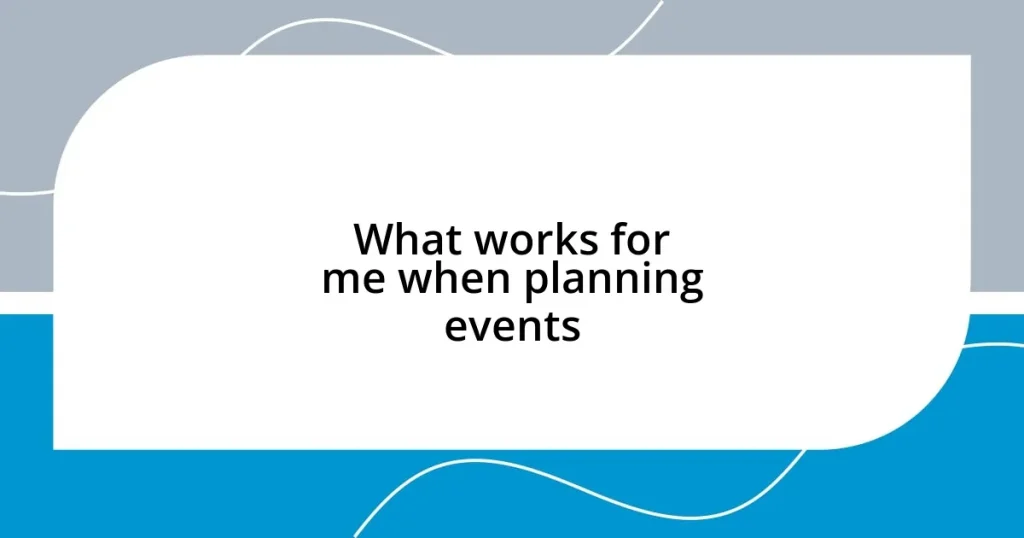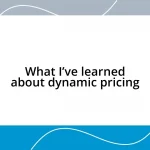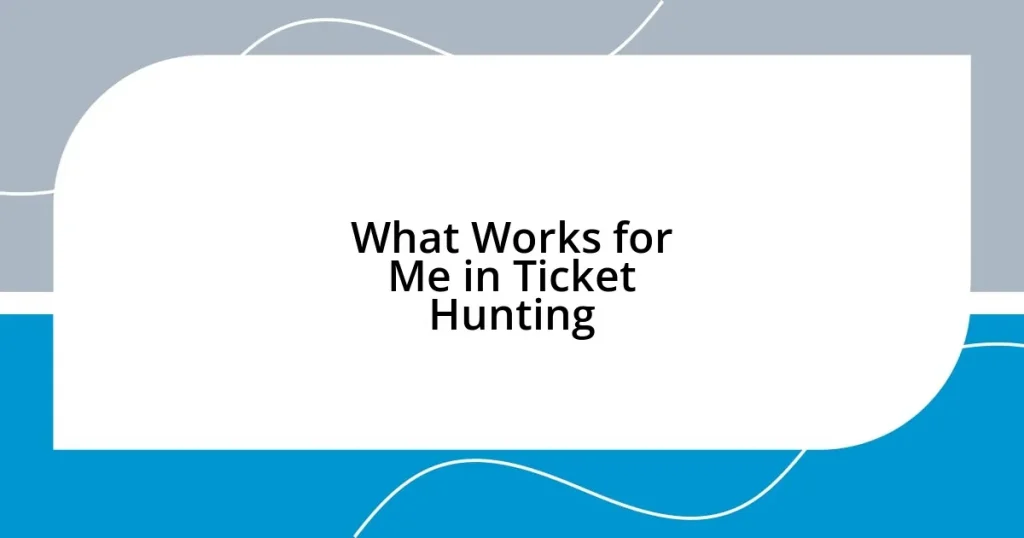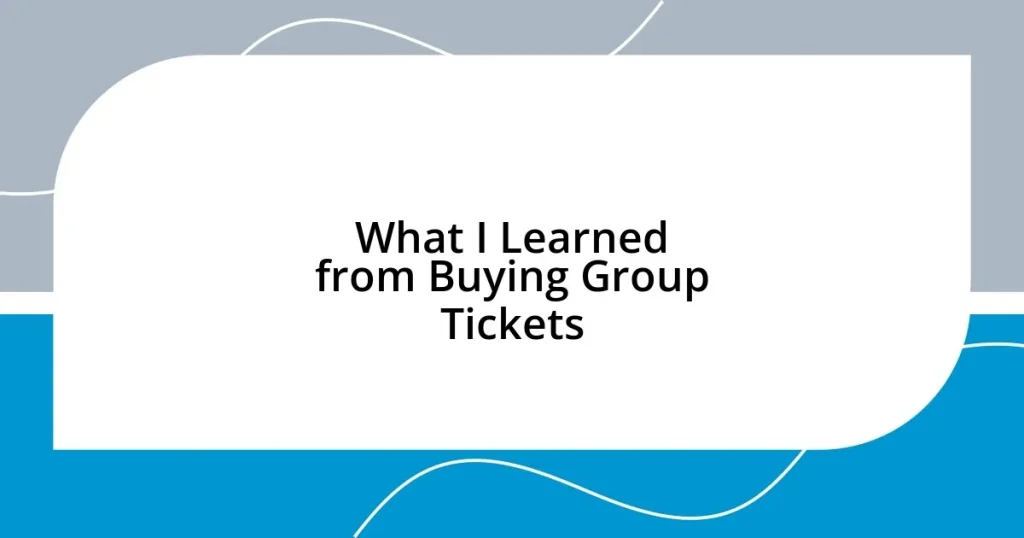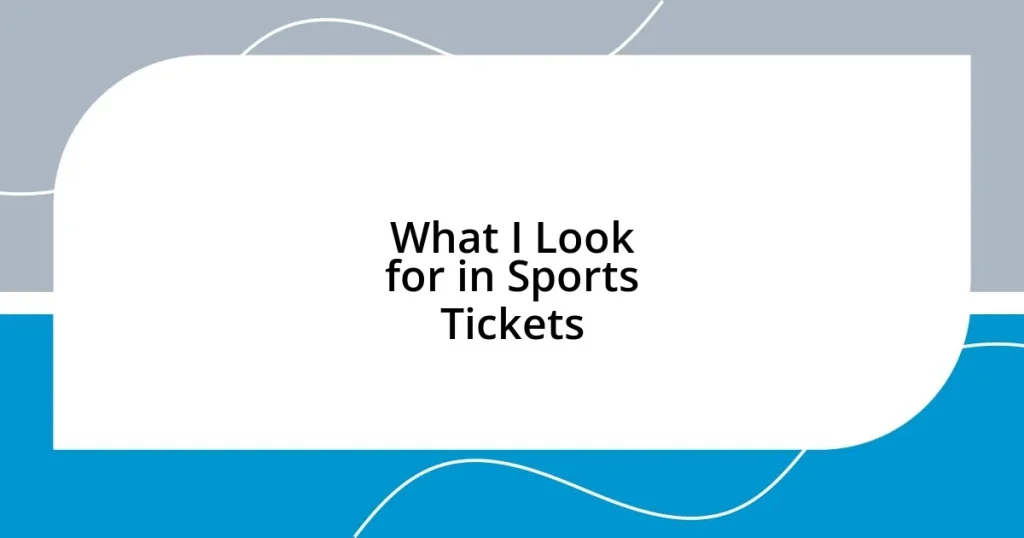Key takeaways:
- Understanding the primary goal of the event significantly influences planning decisions, including venue choice and audience engagement.
- Setting clear event goals fosters collaboration among stakeholders and enhances overall event success.
- Creating a detailed checklist helps manage organization and reduces stress, making event preparation more efficient.
- Engaging the right vendors and maintaining clear communication is vital for meeting specific event needs and ensuring a smooth experience.
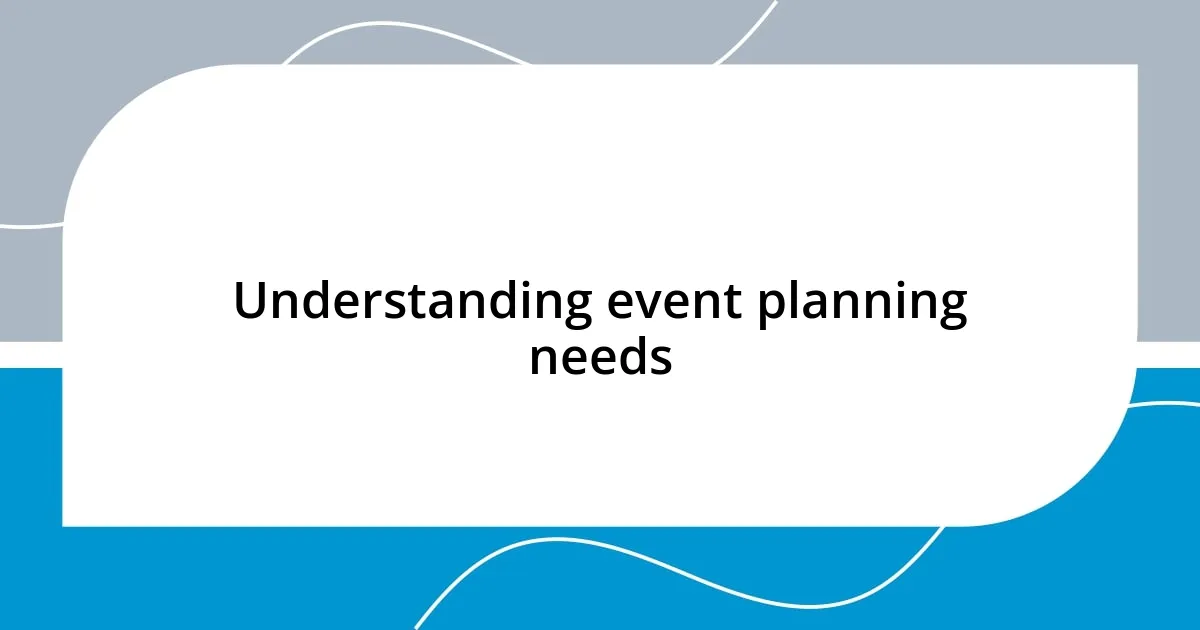
Understanding event planning needs
When I start thinking about event planning needs, I first ask myself, “What is the primary goal of this event?” This question guides every decision I make, from the venue selection to the guest list. I vividly remember planning a community fundraiser; understanding the emotional connection people had to the cause really shaped how I approached every aspect of the event.
Another key aspect is knowing the audience. Who will be there, and what do they find appealing? For instance, when organizing a team-building retreat, I listened to colleagues’ preferences and discovered that outdoor activities fostered excitement and camaraderie. It’s fascinating how when you truly understand your audience’s desires, the event transforms from just another gathering into an unforgettable experience.
Lastly, I’ve learned to be flexible and adapt to changing needs throughout the planning process. Once, during a wedding I was coordinating, the couple had a last-minute change in vision. Instead of panicking, I shifted gears and reimagined the layout to better suit their new direction. It reinforced my belief that being attuned to evolving requirements not only alleviates stress but also enhances the overall success of the event.
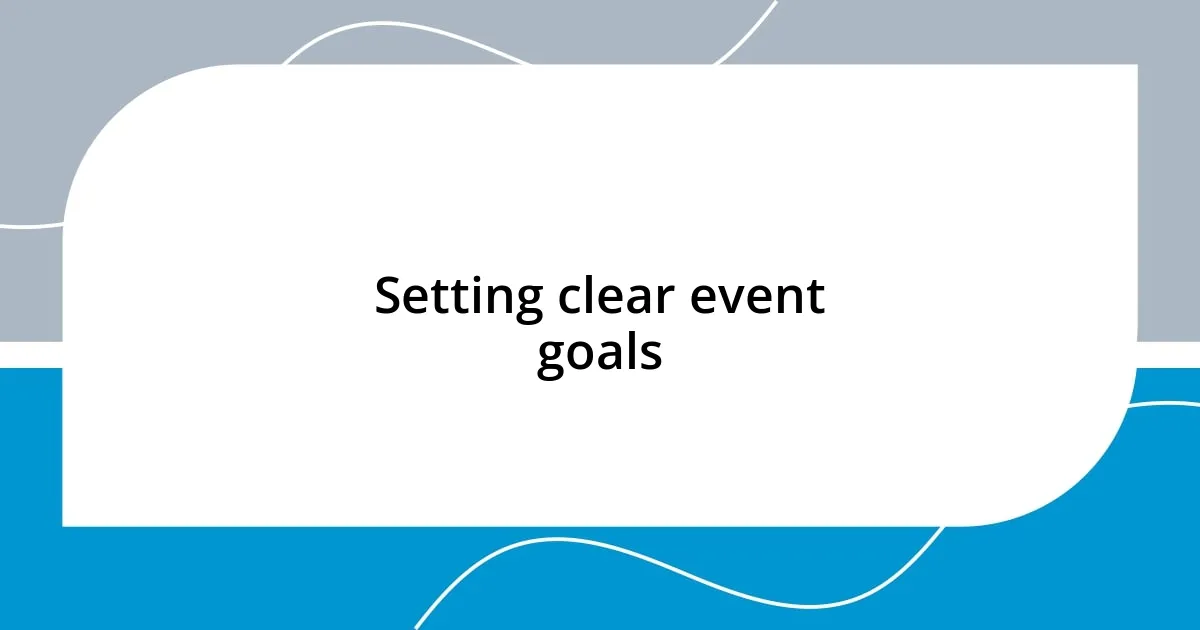
Setting clear event goals
Setting clear event goals is crucial in creating a successful gathering. I often find that when I outline the specific objectives beforehand, such as raising awareness or fostering connection, it carves a clear pathway for all other planning decisions. I once organized a corporate seminar with the aim of networking among local businesses. Knowing this goal shaped everything, from the venue setup to the activities I included, ultimately leading to meaningful connections being forged.
I’ve realized that articulating goals not only focuses my efforts but also helps engage stakeholders. For instance, when discussing a charity gala with my team, I shared my vision of gathering funds for a local initiative. This transparency encouraged everyone to contribute their own ideas, bringing forth a collaborative atmosphere that I truly value. Setting goals is not just a box to check off; it’s about giving everyone involved a sense of purpose and ownership.
As I reflect on my planning experiences, I’ve seen firsthand how revisiting and refining these goals throughout the process can lead to even better outcomes. During a recent family reunion, we initially aimed for just a fun gathering. However, as we progressed, we realized we also wanted to strengthen family bonds. By tweaking our focus, we ended up crafting activities like storytelling sessions that deepened our connections and made the event truly memorable.
| Focus Area | Example |
|---|---|
| Objective Clarity | Specifying whether the goal is fundraising or networking |
| Stakeholder Engagement | Encouraging team input by sharing overall goals |
| Review and Adaptation | Tweaking activities to enhance family bonds during a reunion |
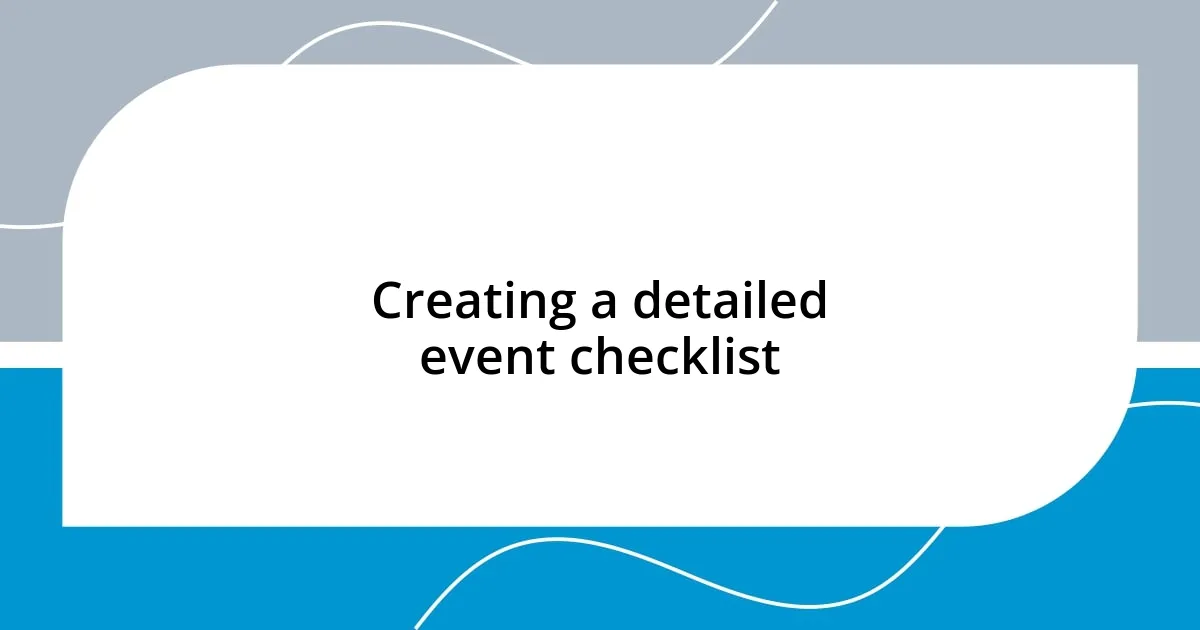
Creating a detailed event checklist
Creating a detailed event checklist has been one of my go-to strategies for staying organized. I remember when I was preparing for a community fair, I crafted a checklist that laid out everything from vendor contracts to equipment rental deadlines. It was like having a roadmap to guide me through the chaos, ensuring I didn’t overlook crucial details.
Here are some essential items I include in my event checklist:
- Venue Details: Location address, setup timings, and access protocols.
- Suppliers: Contacts for catering, decoration, and technology needs.
- Permits: Necessary licenses and permissions for your activity.
- Guest List: A tracking sheet for RSVPs and dietary preferences.
- Timeline: Hour-by-hour schedule of the day’s events.
- Budget: All expected costs laid out with actual expenses to track spending.
By using this checklist method, I’ve learned not only to prepare for events, but also to manage stress levels as the date approaches. Having that tangible list gives me confidence, knowing I’m covering all bases.
On another occasion, I was orchestrating a milestone birthday celebration, and while following my checklist, I discovered it was also a great tool for fostering collaboration. I had my family members help, giving them specific items to oversee. It turned into a fun bonding experience, as we crossed things off together, which ultimately helped to make the event more personal and enjoyable.
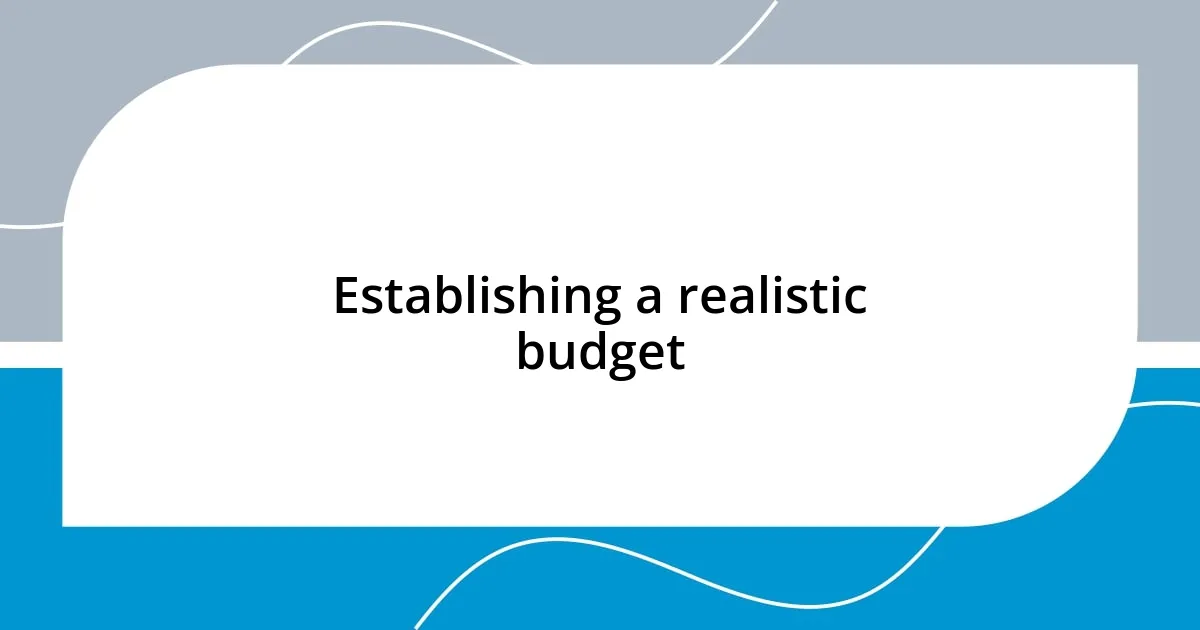
Establishing a realistic budget
Establishing a realistic budget is one of the cornerstones of successful event planning. When I first started coordinating events, I learned this the hard way during my sister’s wedding. I had a vision that exceeded our budgetary limits, which led to some stressful conversations later on. Now, I always sit down and get a clear understanding of all potential expenses, from venue costs to décor and entertainment. This proactive approach not only saves me time but also opens up discussions with stakeholders about what can realistically be achieved without financial strain.
During one of my charity events, I experienced the benefits of including a contingency fund. I allocated a small percentage of the overall budget just for unexpected expenses—a lesson I learned after underestimating costs in the past. This little safety net proved invaluable when we faced unforeseen changes in catering options at the last minute. I find it helps to alleviate anxiety knowing you’ve got a backup plan in place. Plus, it allows for a bit of flexibility, enabling me to focus more on the overall experience rather than stressing about finances.
I encourage you to reflect on your personal experiences with budgeting. Have you ever felt overwhelmed by expenses? Recently, I organized a community workshop and faced the tightest budget I had ever worked with. To cope, I reached out to local businesses for sponsorships. Surprisingly, many were eager to help in exchange for promotional opportunities. That experience taught me the value of community support in budget planning. It’s amazing to see how creative solutions can emerge from constraints, transforming challenges into opportunities for collaboration.
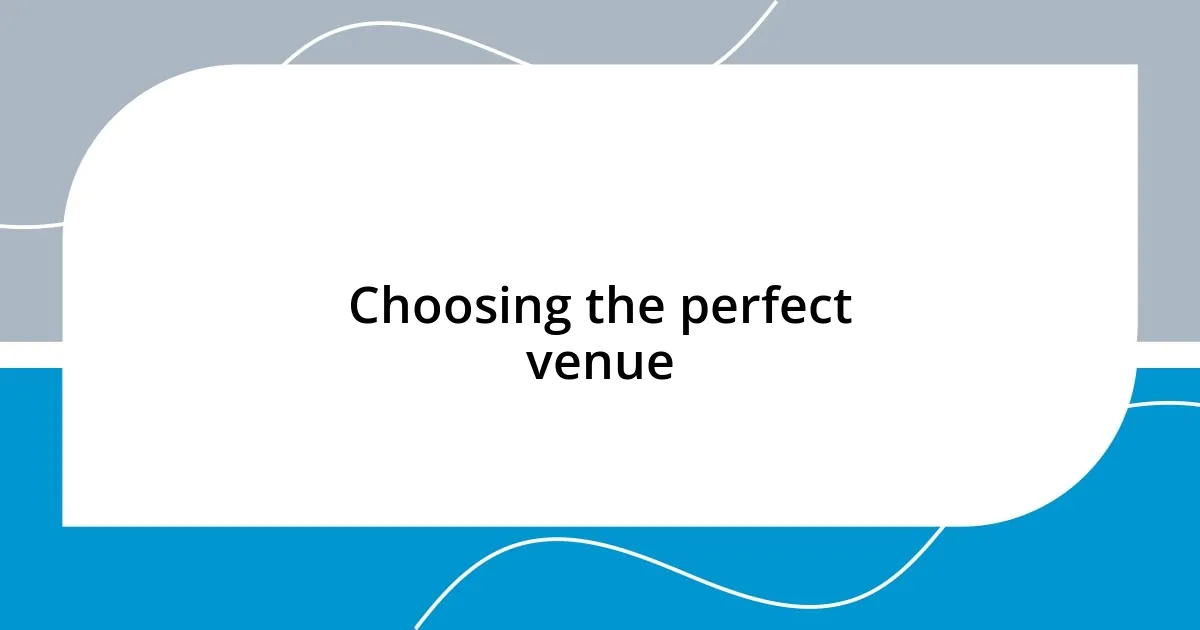
Choosing the perfect venue
Choosing the perfect venue can truly make or break an event. I vividly remember the time I was planning a corporate retreat; I thought a fancy hotel would be the best choice, but after a site visit, I realized it lacked the cozy, collaborative vibe we needed. The moment I walked into a charming local community center, I felt it—the warmth, the inviting atmosphere, and the space that encouraged open interaction. Isn’t it fascinating how a venue can set the emotional tone for the entire gathering?
Accessibility is another critical factor I’ve learned to prioritize. Once, while organizing a workshop, I picked a venue that was simply stunning, but its remote location ended up deterring many attendees. When I asked for feedback later, several expressed hesitation about navigating the distance, especially during rush hour. This experience highlighted the importance of aligning venue choice with the target audience’s convenience. Do you consider how easily your guests can reach the venue?
Lastly, I always suggest visiting potential venues multiple times. During my last event, I went to check in on the layout a week before, and it allowed me to visualize seating arrangements and flow. It also sparked a pivotal conversation with the staff about additional equipment we would need that I hadn’t initially thought of. This proactive approach not only solidified my confidence in the space but also helped ensure a seamless experience. Have you ever had a venue surprise you with its hidden potential?
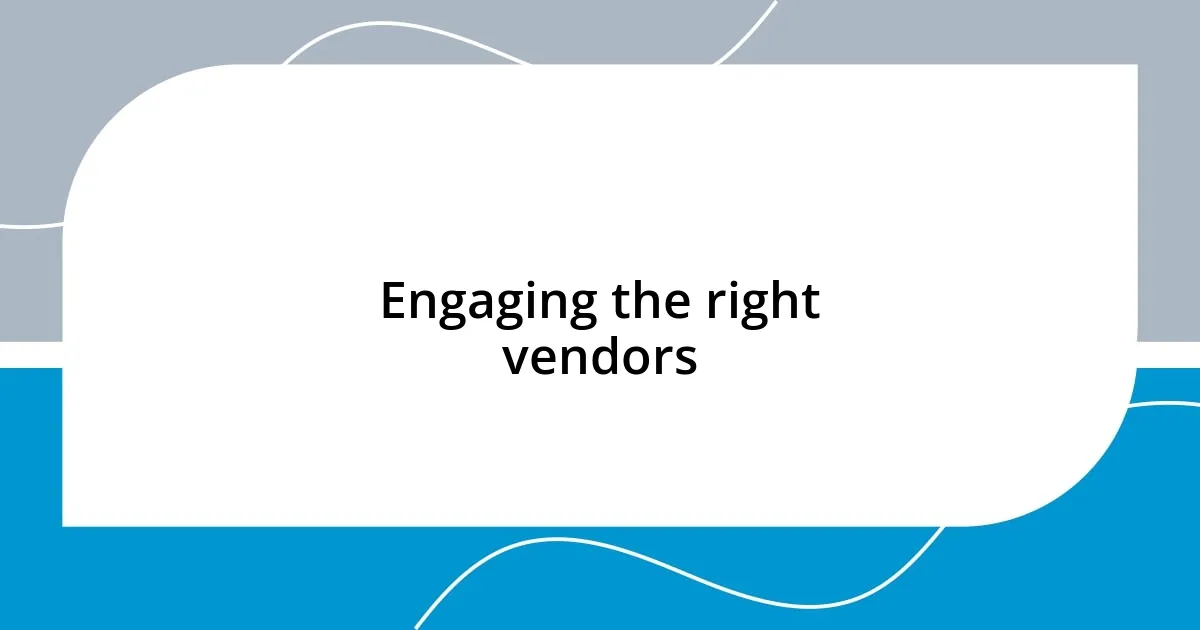
Engaging the right vendors
Engaging the right vendors is crucial to the success of any event. I once had a collaboration that became a logistical nightmare because I didn’t take the time to thoroughly vet the caterer I chose. At the last minute, they were unable to meet our dietary requirements, leaving me scrambling for alternatives. This taught me that aligning vendor capabilities with your event’s needs is essential. Have you ever had to make a last-minute change that turned into a huge stressor?
When I’m looking for vendors, I consistently rely on recommendations from my network. Last year, while organizing a charity gala, I reached out to fellow planners for their insights on photographers and florists. The ones they suggested not only had great portfolios but also proved to be professional and responsive. It’s refreshing how a personal touch not only facilitates trust but also leads to exceptional service and creativity. Have you ever experienced the difference a good vendor can make in your event planning process?
I also emphasize the importance of clear communication when engaging vendors. For my recent birthday bash, I had an in-depth conversation with the DJ about music preferences and the vibe I wanted to create. This open dialogue allowed him to tailor the playlist perfectly and kept the energy high throughout the night. It reminded me that great partnerships stem from genuine connection and understanding. What strategies do you use to ensure your vendors are on the same page with your vision?
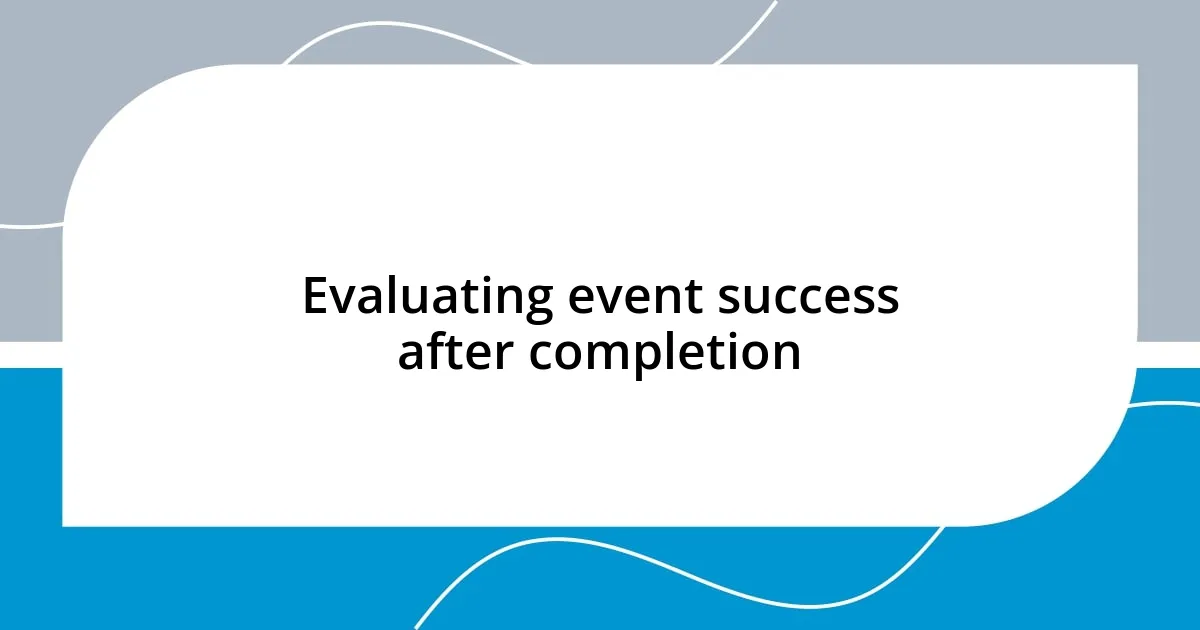
Evaluating event success after completion
Evaluating the success of an event post-completion is an essential step I always take. One of my favorite methods involves sending out a detailed survey to attendees. I recall sending a survey after a networking event and being surprised at how much feedback I received. Not only did attendees appreciate the themes discussed, but they also noted aspects I hadn’t considered, like the acoustics of the room. Have you ever been amazed by the insights your guests can provide?
I also make it a point to gather quantitative data, such as attendance numbers and engagement levels. For instance, during a recent workshop, I tracked how many participants stayed for the entire session versus leaving early. Analyzing these metrics helps me identify what works well and what might need adjusting for future events. It’s a bit like putting together pieces of a puzzle—each number tells a part of the story. Have you ever realized a simple attendance count could reveal so much about your event’s appeal?
Lastly, I believe in sitting down with my team to debrief after an event. I usually ask, “What was the highlight for each of us?” Sharing personal experiences fosters a deeper understanding and allows us to celebrate successes as a group. Reflecting on the emotional impact we aimed for can also guide my planning for future gatherings. Don’t you find that discussing what resonated most can sometimes spark new ideas for your next event?


